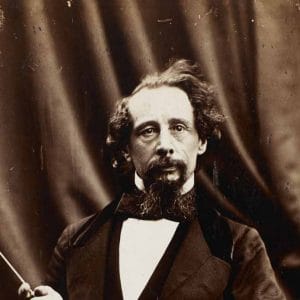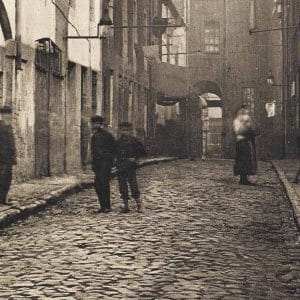
Charles Dickens’s A Christmas Carol
出版日期: 1843 文学时期: Victorian 类型: Victorian
First published in 1843, A Christmas Carol was the first, and the most popular, of Dickens’s series of Christmas books. It is an allegory about a cold-hearted miser, Ebeneezer Scrooge, who is visited on Christmas Eve by the ghost of his dead partner, Jacob Marley. During the night, three further spirits – the ghosts of Christmas Past, Present and Future – also appear to Scrooge, each holding a mirror to his behaviour and highlighting the unhappiness resulting from his misanthropy. The Ghost of Christmas Future, the most sinister of the three spectres, reveals the gloomy consequences for Scrooge, and for those like Bob Cratchit and his disabled son Tiny Tim whose livelihoods depend upon him, should he fail to mend his ways.
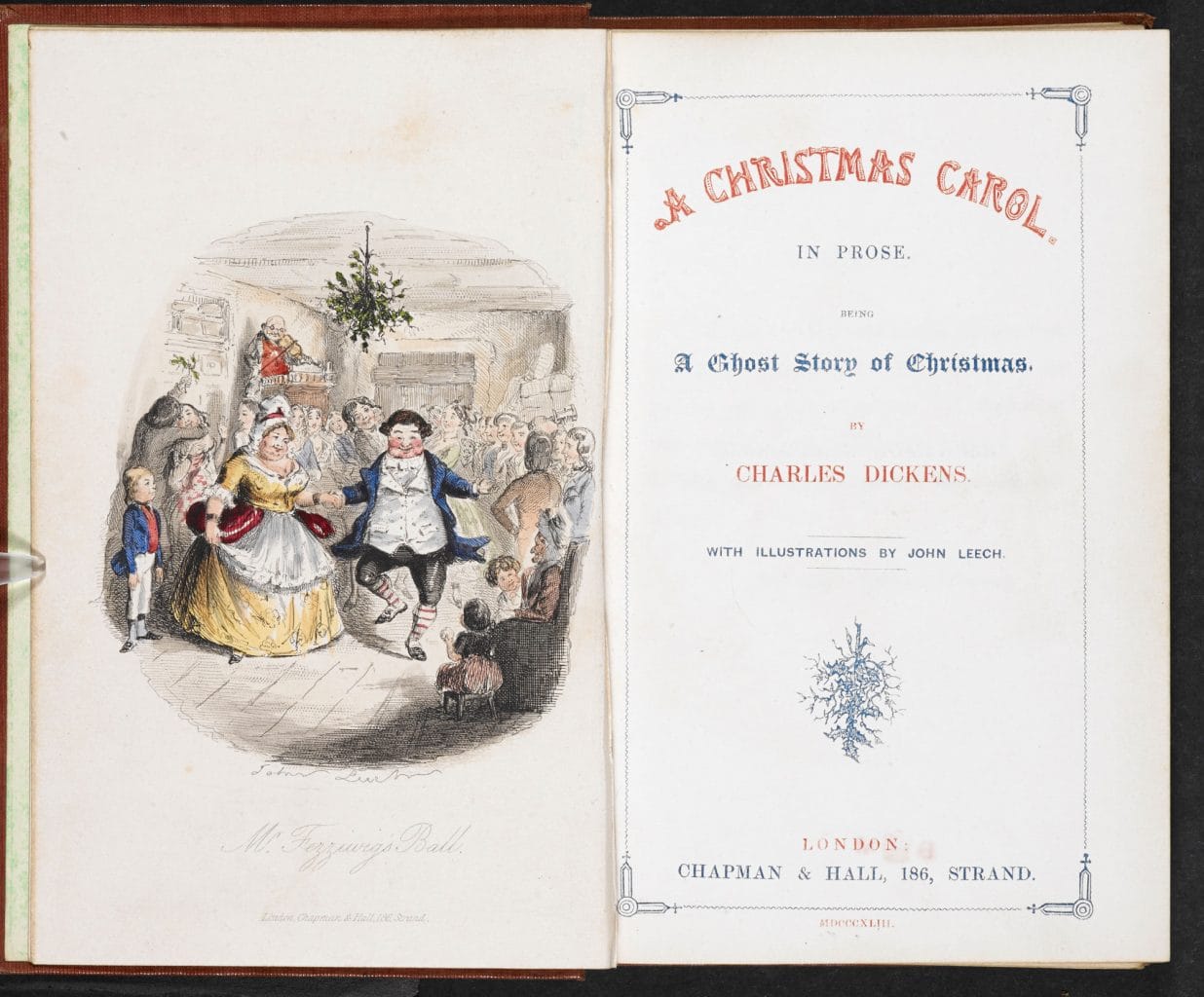
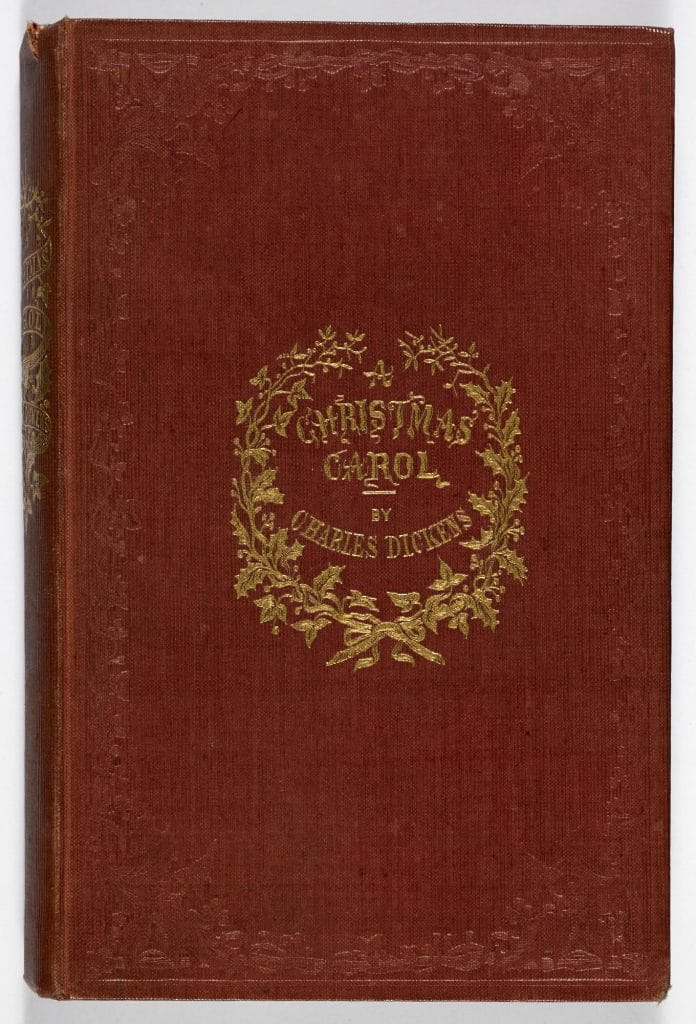
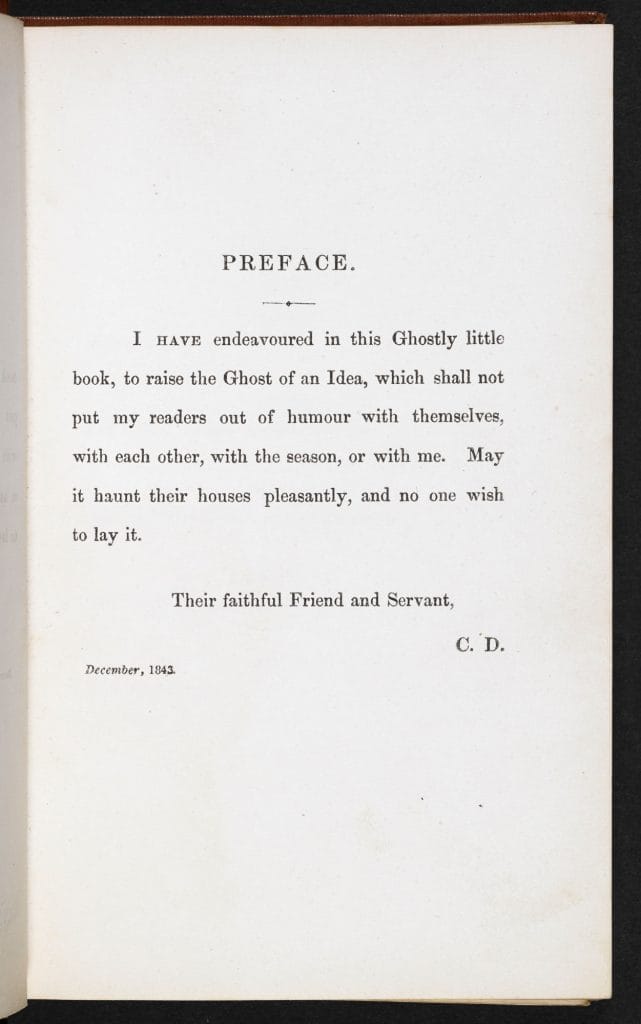
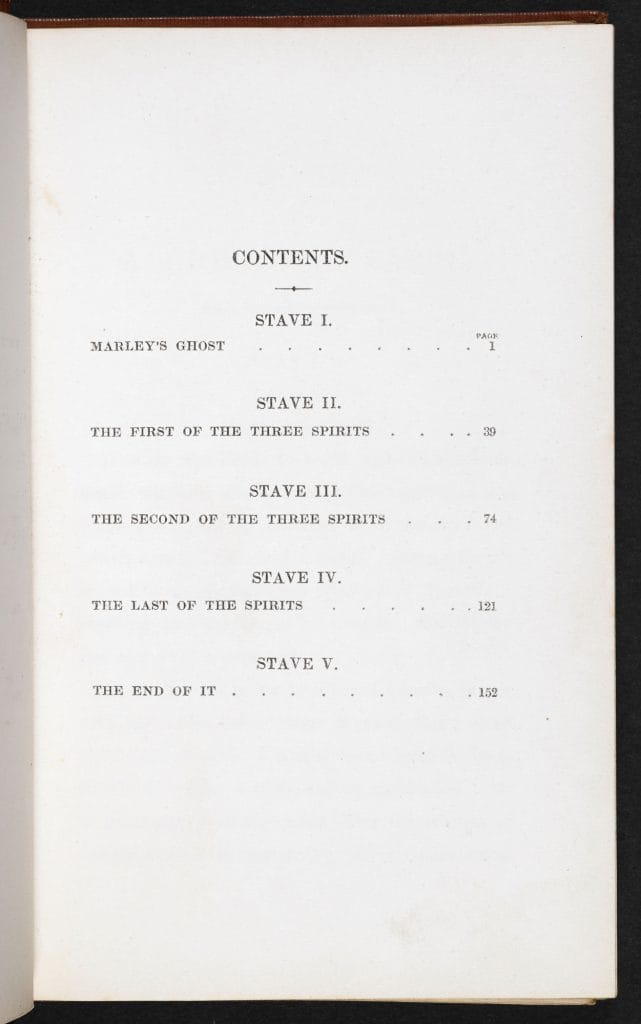
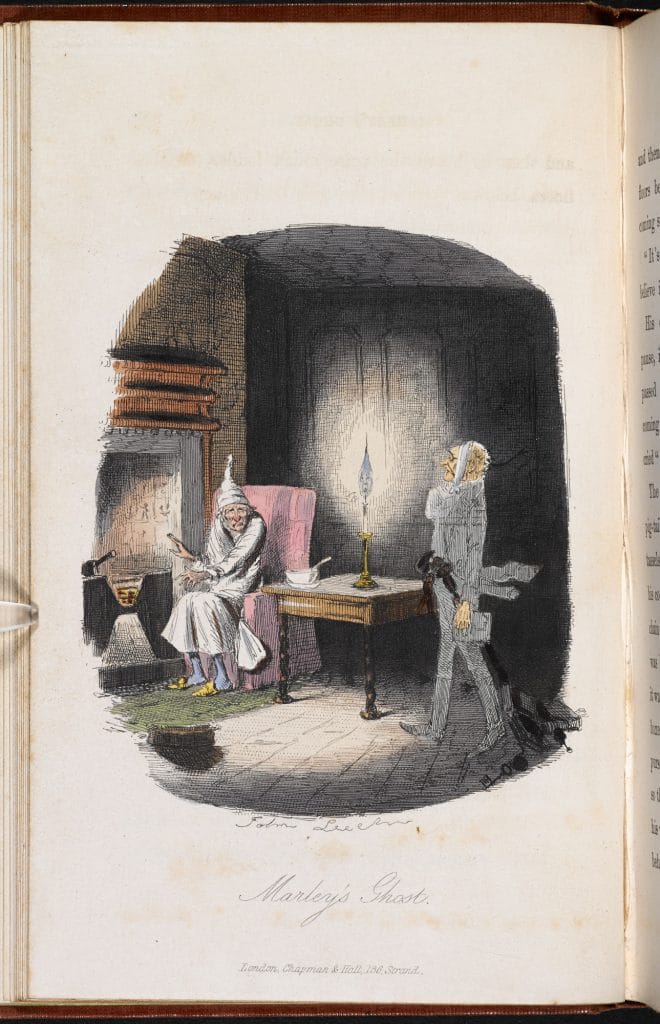
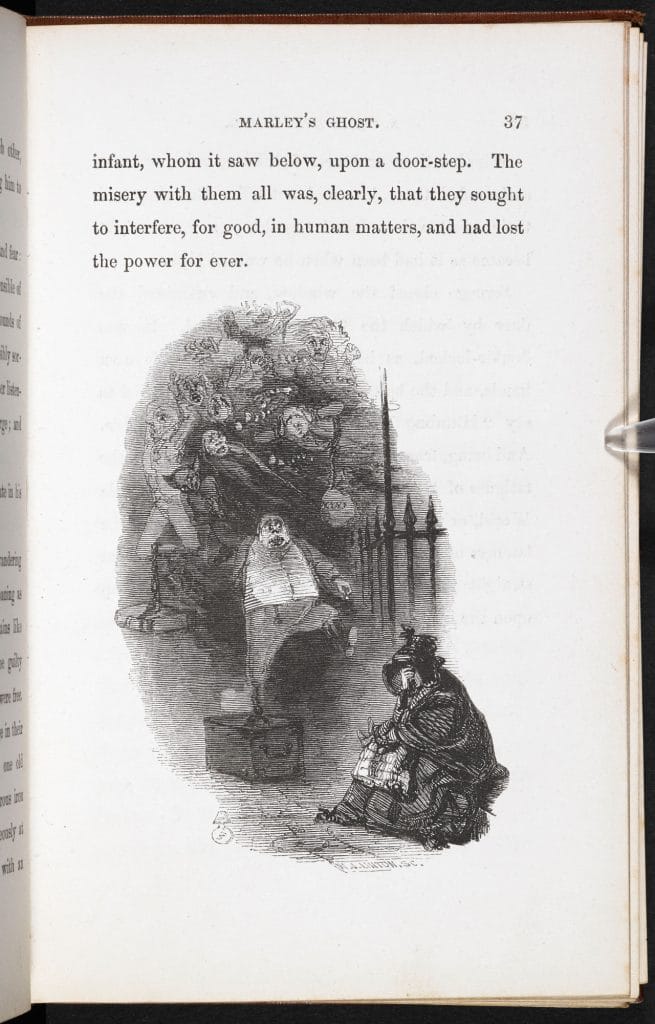
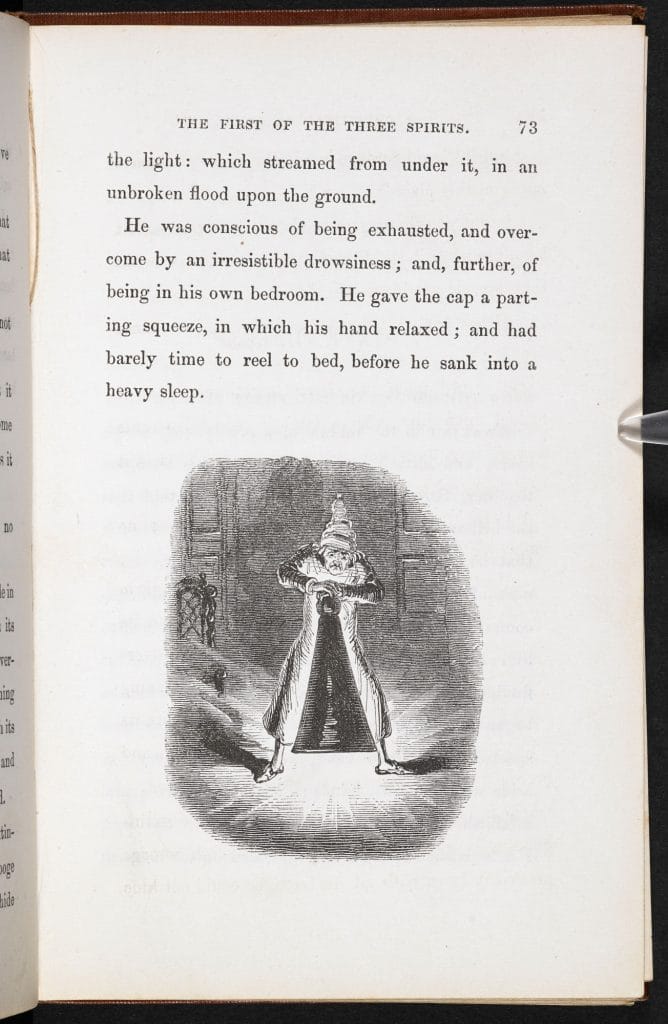
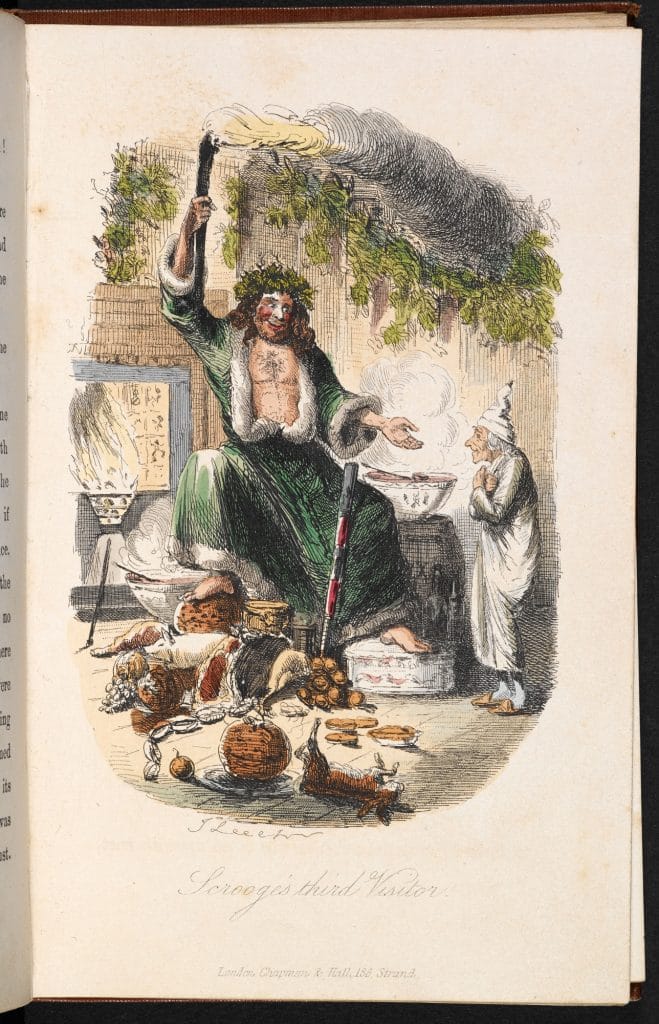
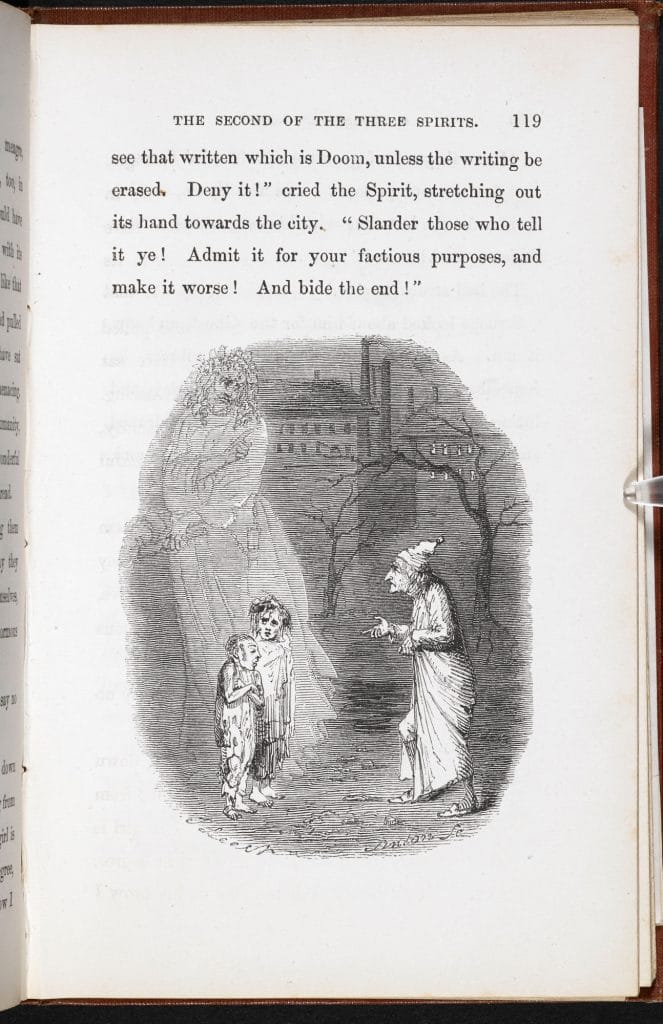
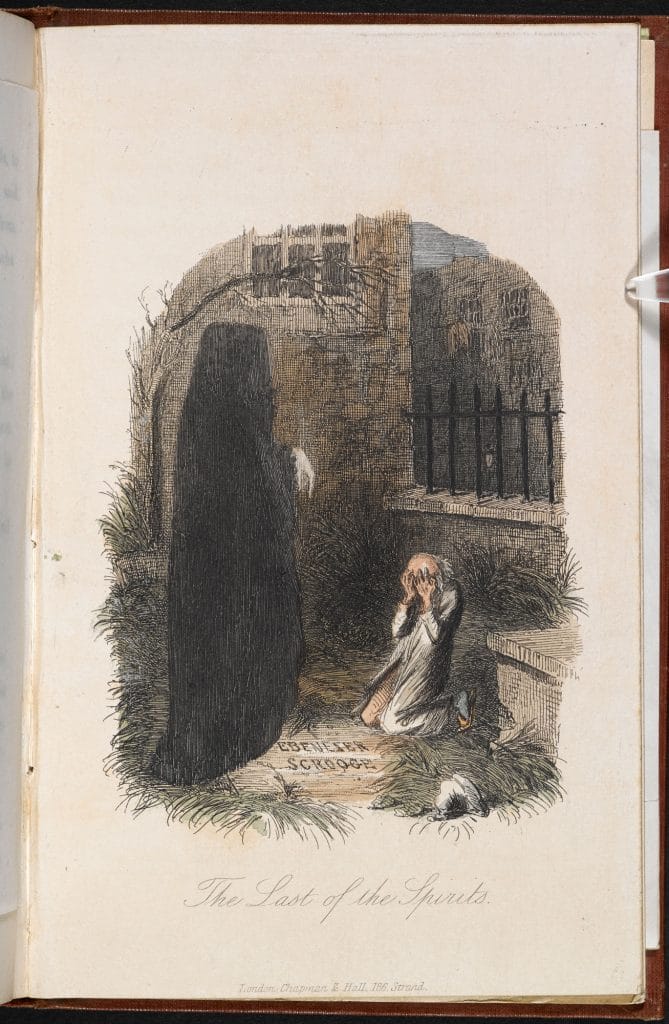
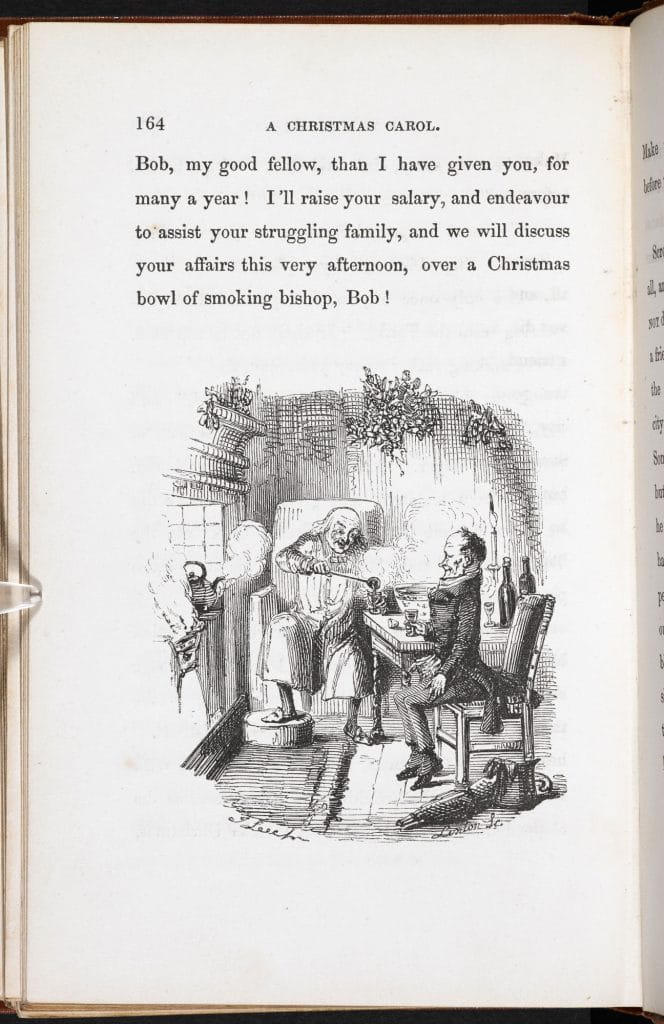
In addition to Scrooge’s own plight, the story addresses wider social issues, particularly in the scene where the Ghost of Christmas Present shows Scrooge the two children Ignorance and Want: ‘From the foldings of its robe, it brought two children; wretched, abject, frightful, hideous, miserable. They knelt down at its feet, and clung upon the outside of its garment’. Both children are the direct result of the poverty afflicting much of Victorian society. Dickens was a fierce defender of children, and took every opportunity to highlight the disastrous implications of neglect, financial hardship and a lack of education on their wellbeing.
Dickens had written about misanthropes, Christmas and the supernatural before in the Gabriel Grub episode of The Pickwick Papers (1837), but it was A Christmas Carol which truly caught the public imagination. The associations between Christmas, supernatural and Dickens have lasted ever since. Names and dialogue from the story have also entered the language. Those who dislike Christmas are given the name ‘Scrooge’, but they do of course have the option of replying with Scrooge’s vehement ‘Bah, humbug!’ to any call for seasonal good cheer
The pure pleasures of Christmas
The opening to chapter three revolves around the high-spirited Cratchit Christmas dinner. This is a key scene that wraps its serious messages – about poverty, charity and God – around an unadulterated celebration of the pure pleasures of Christmas. Readers no doubt relished Dickens’s evocative descriptions of the smells, sights and tastes of Christmas, such as the grandly unveiled pudding which appears, ‘like a speckled cannon-ball, so hard and firm, blazing in half of half a quartern of ignited brandy, and bedight with Christmas holly stuck into the top’. Alongside this, readers invited to contemplate Tiny Tim, who ‘hoped the people saw him in church, because he was a cripple, and it might be pleasant to them to remember, upon Christmas day, who made lame beggars walk and blind men see.’
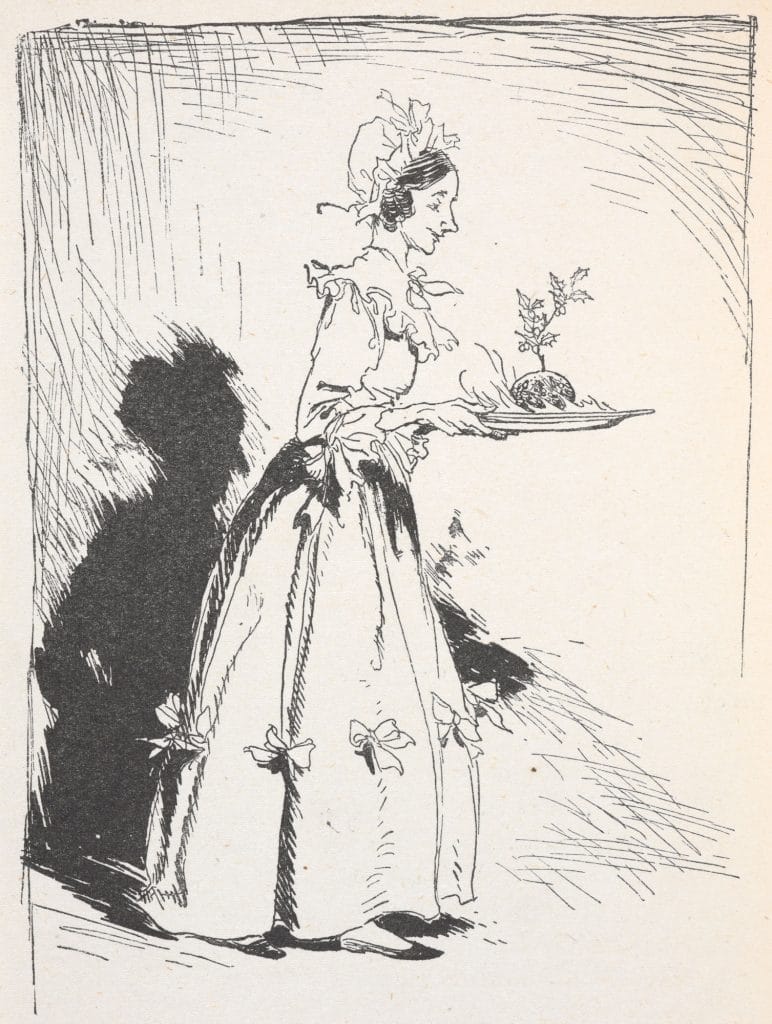
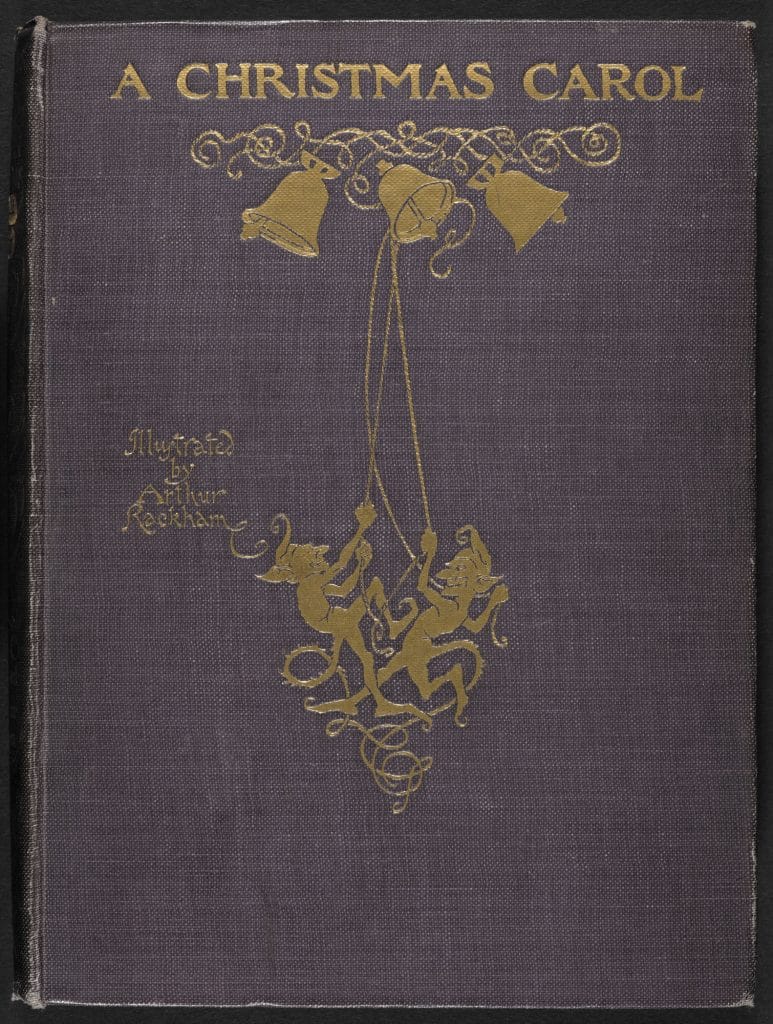
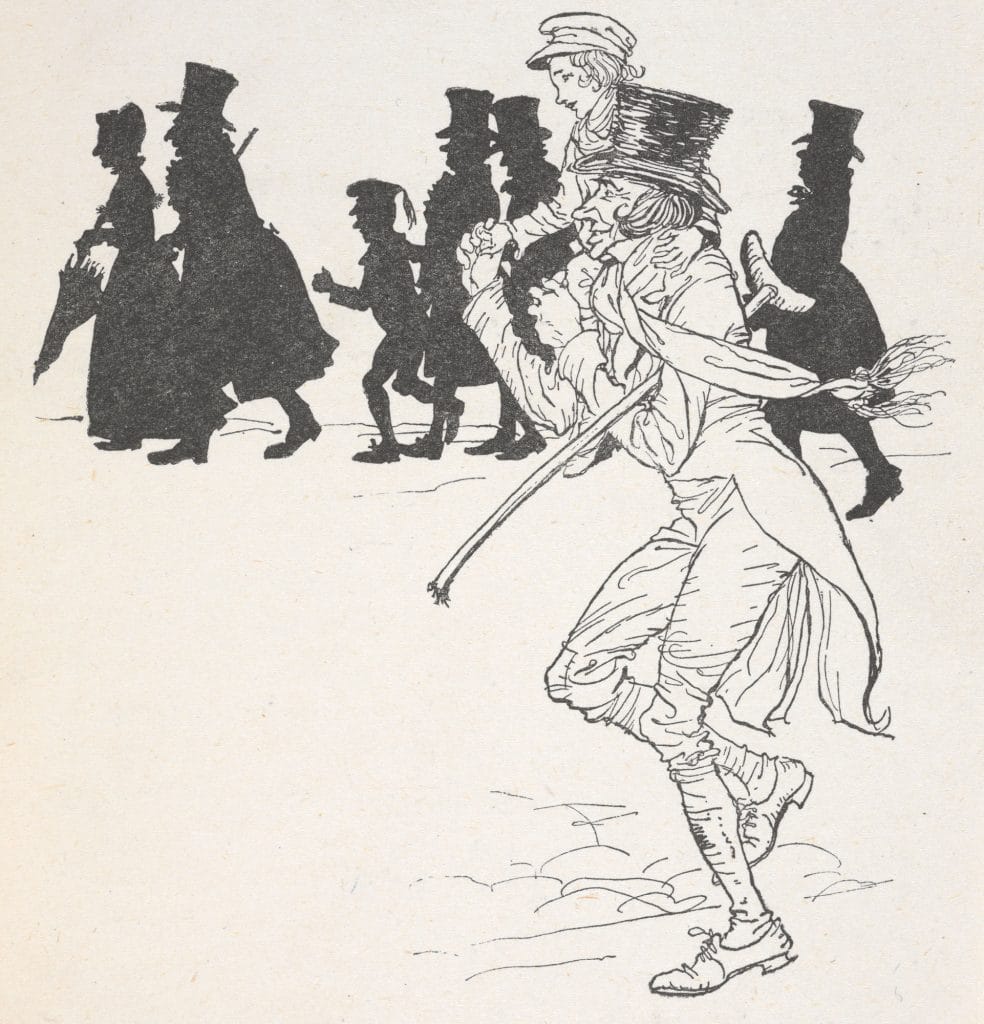
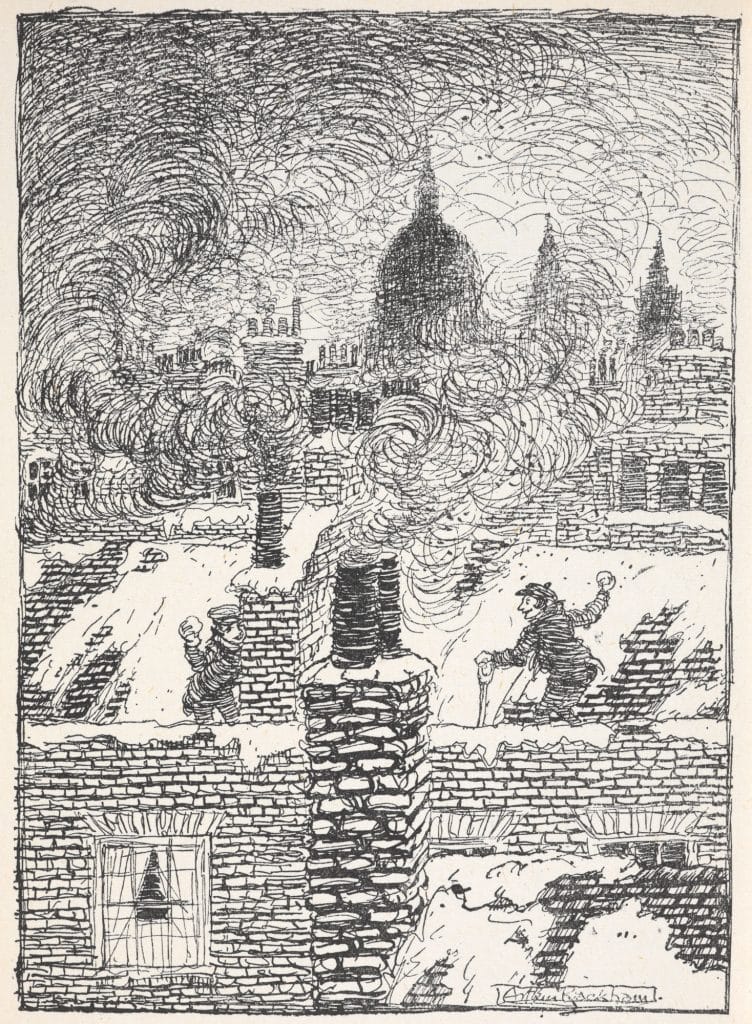
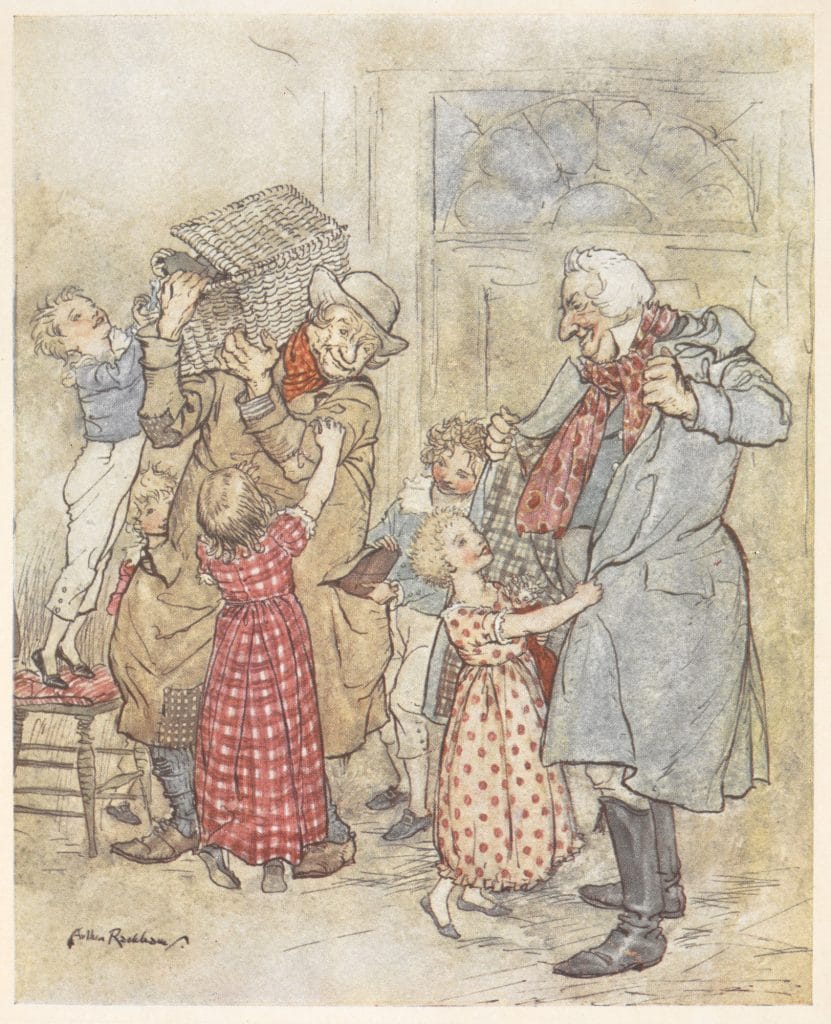
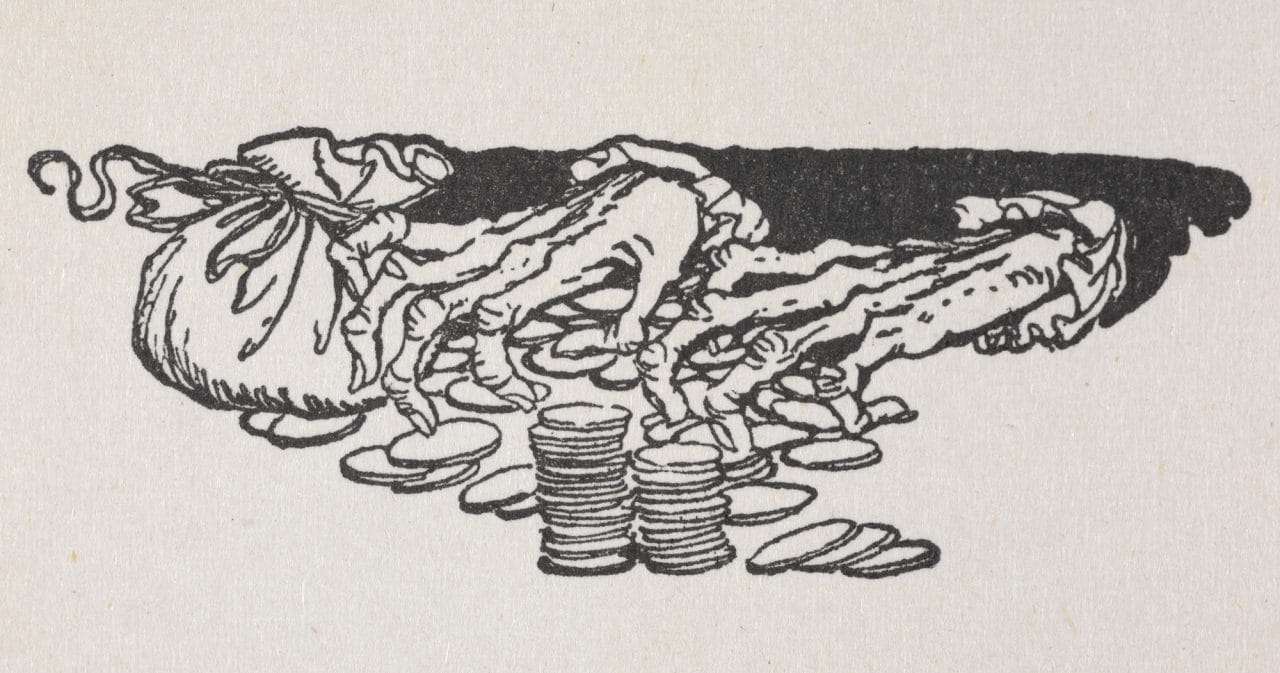
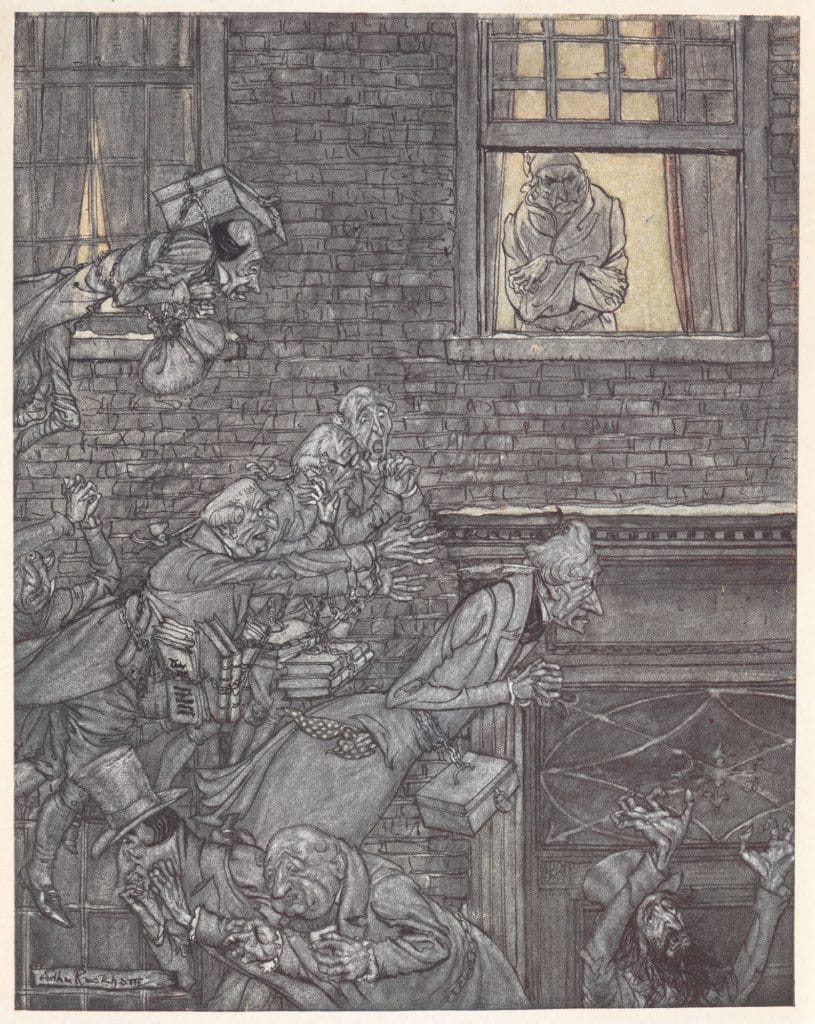
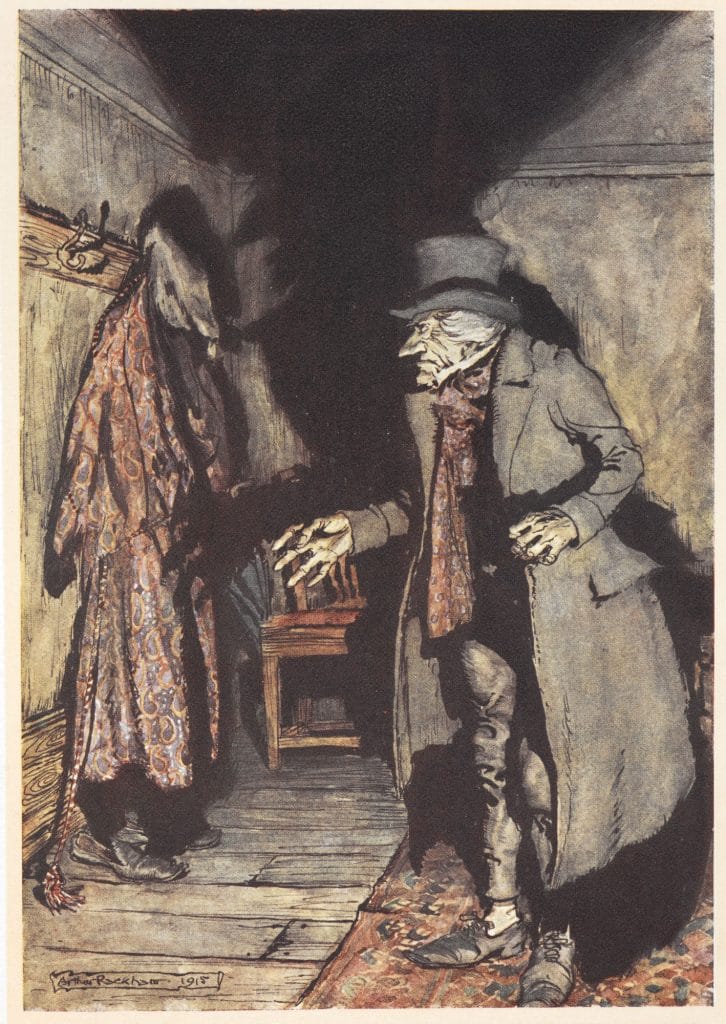
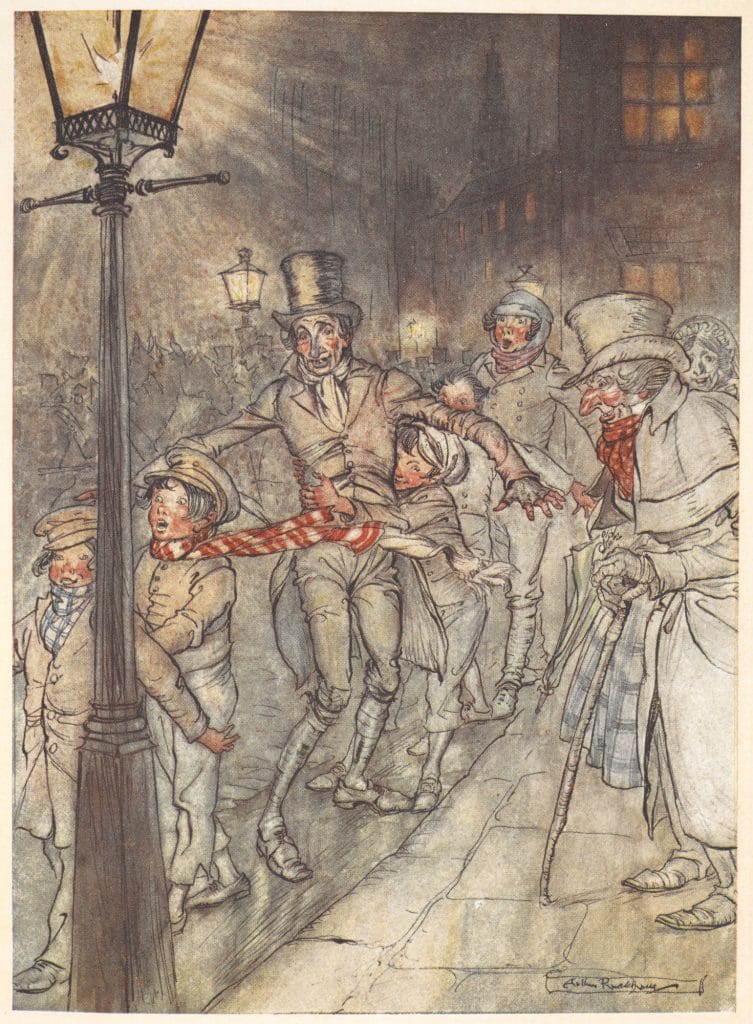
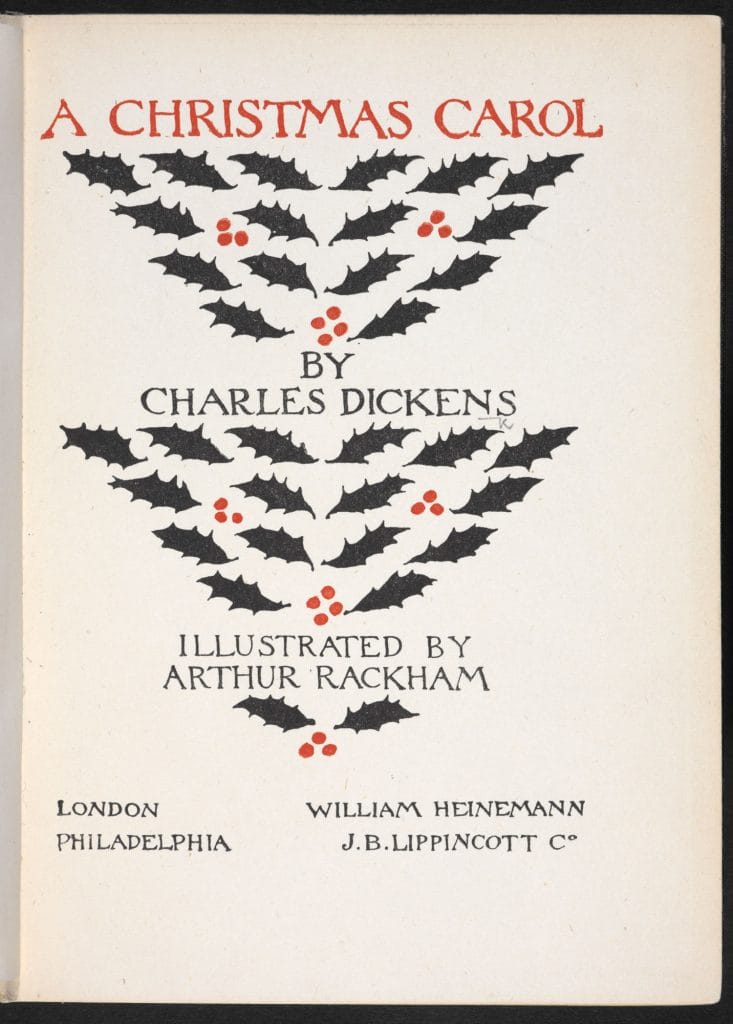
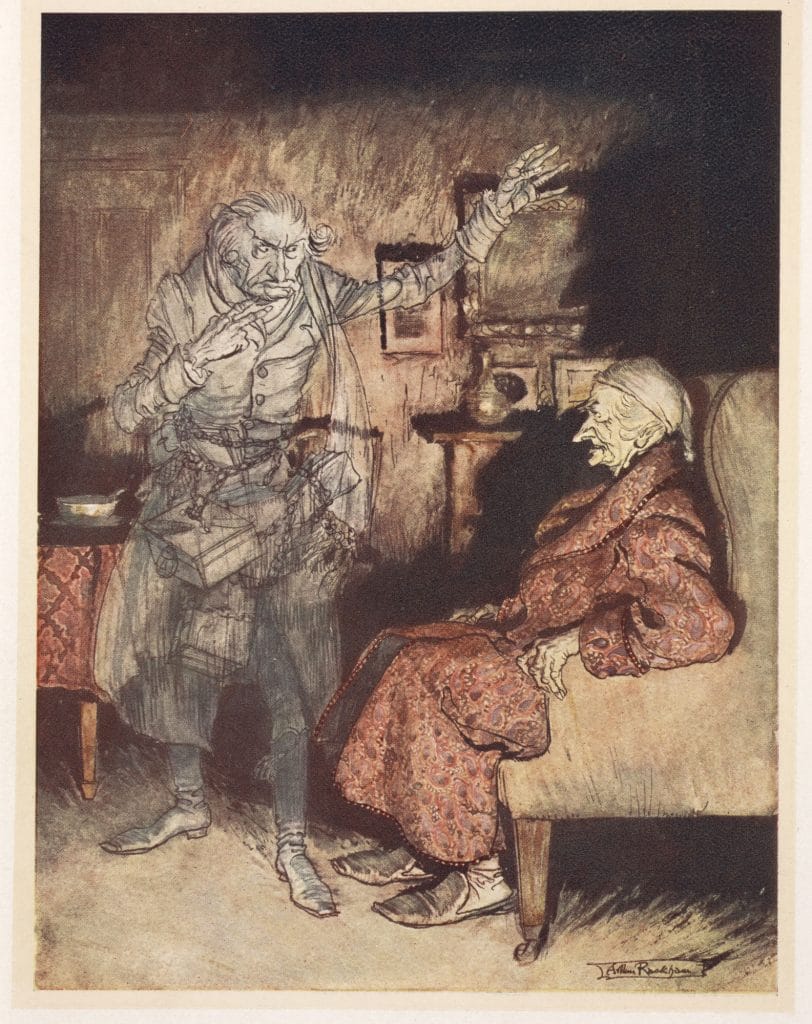
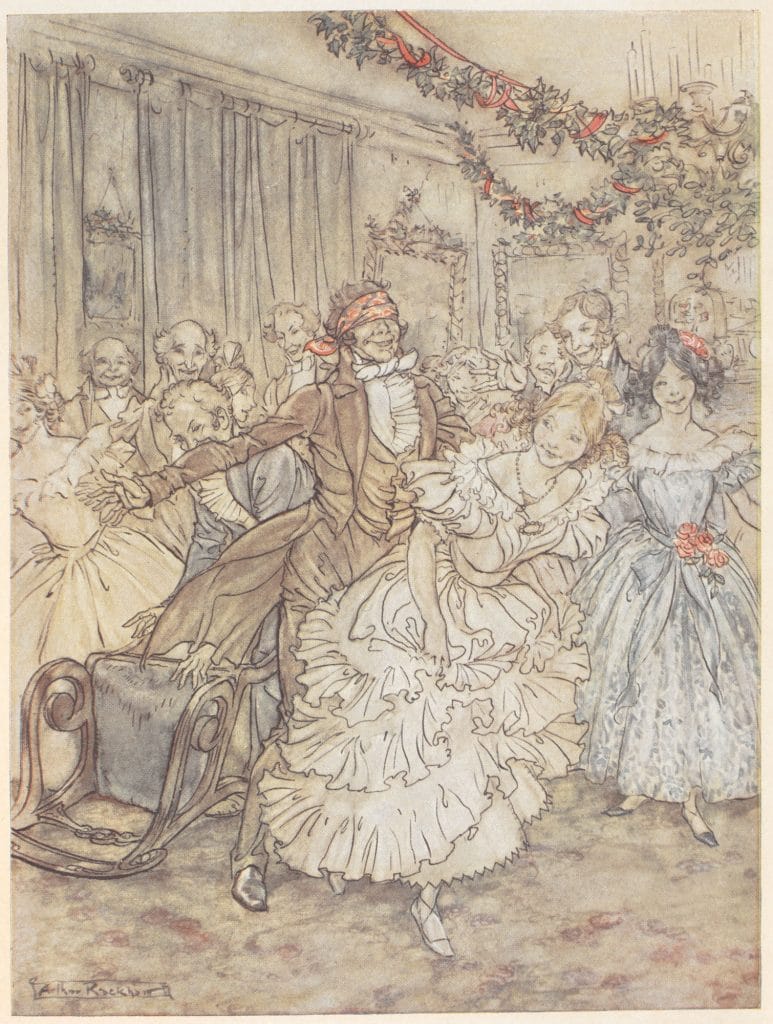
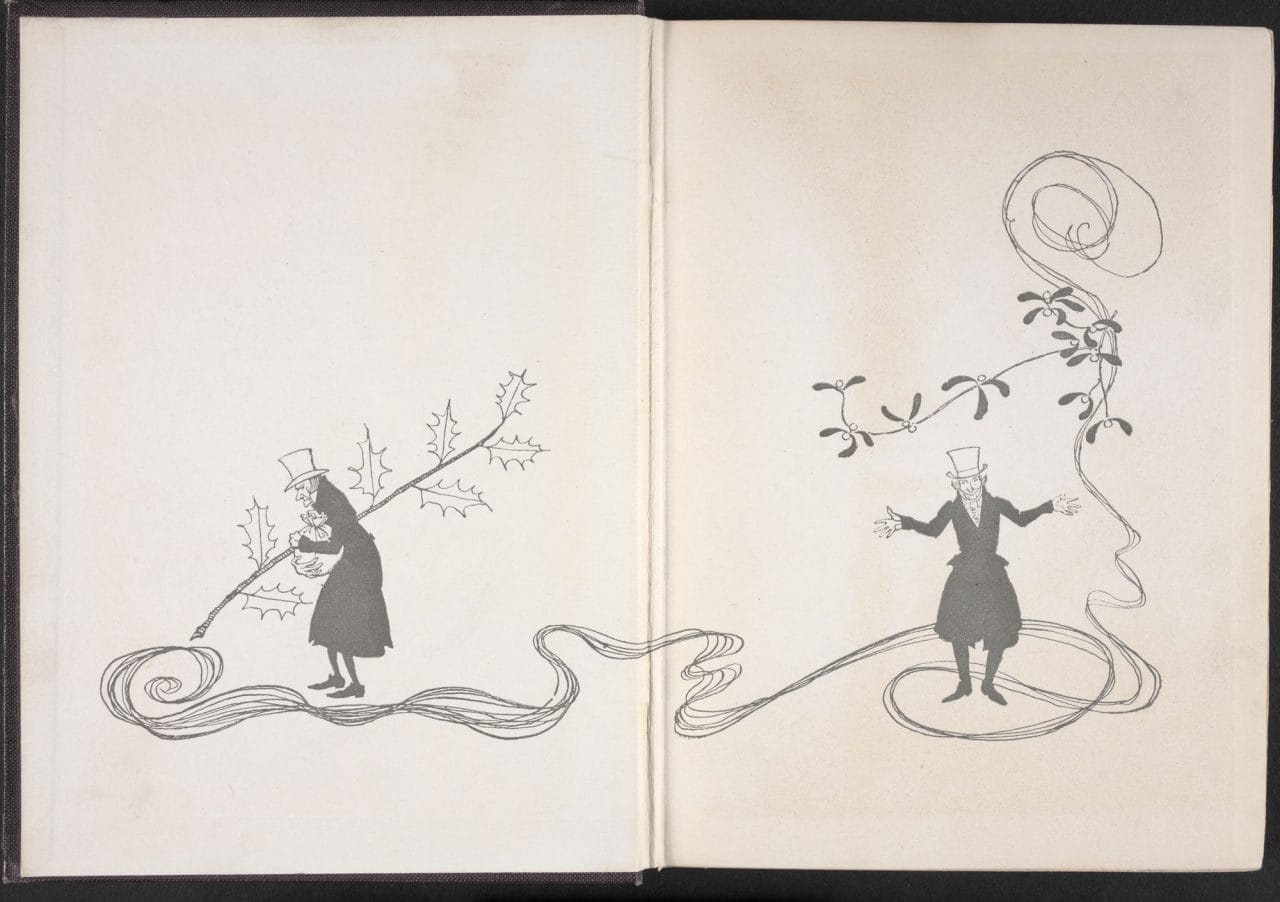
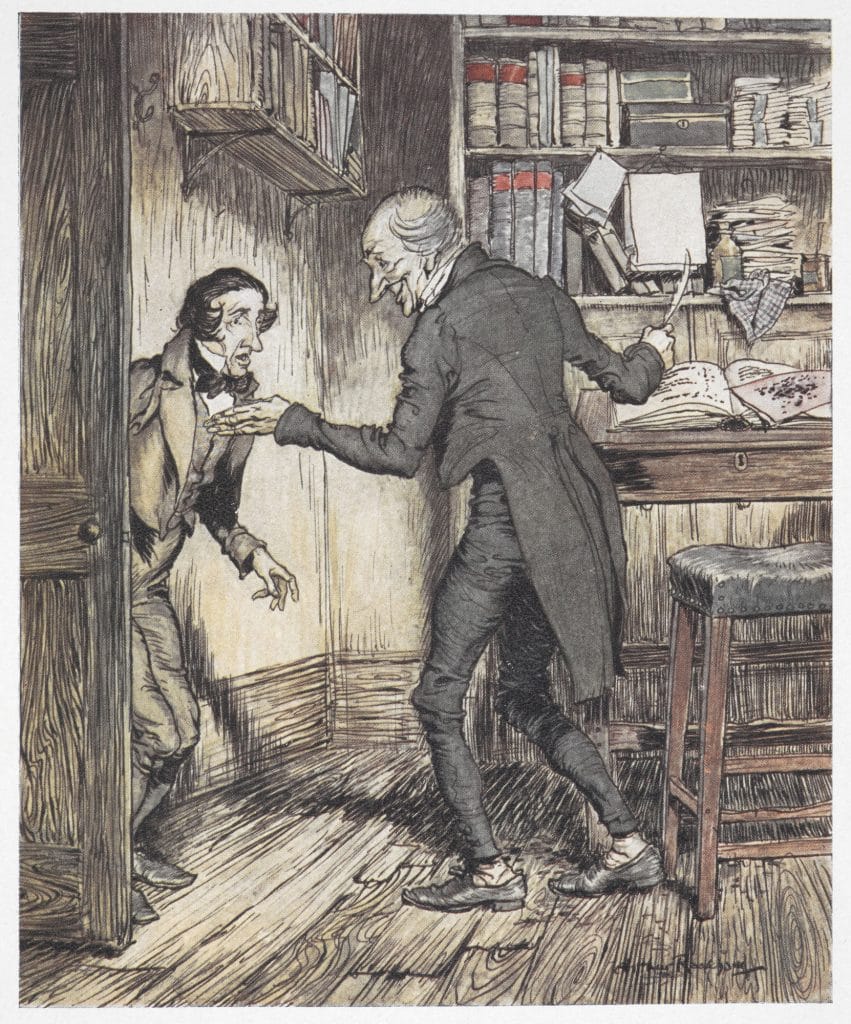
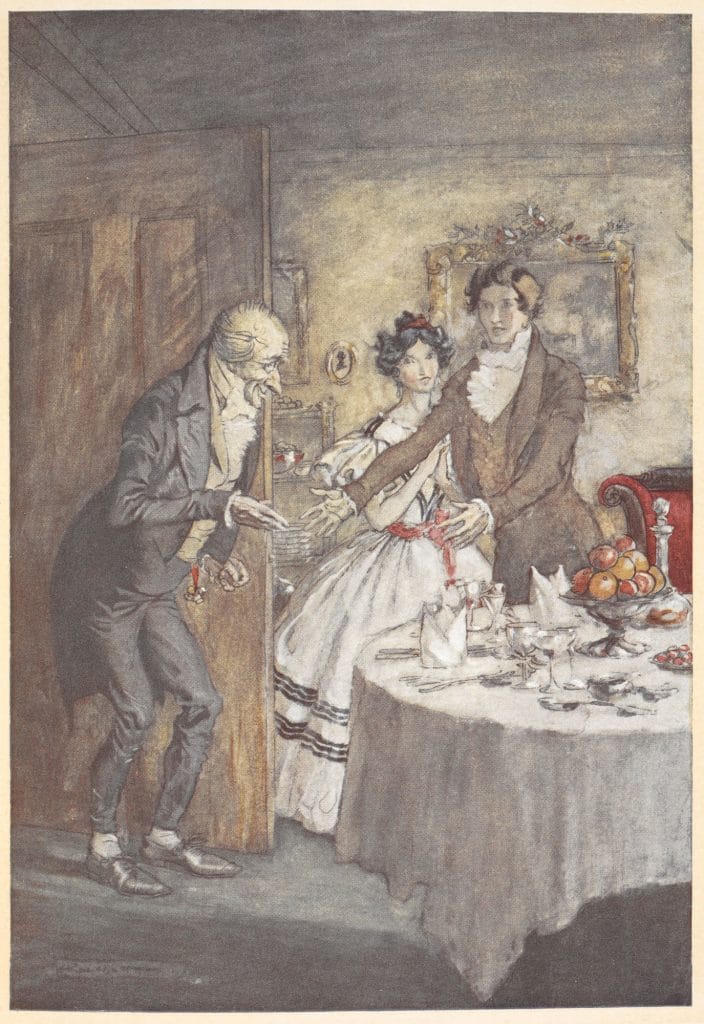
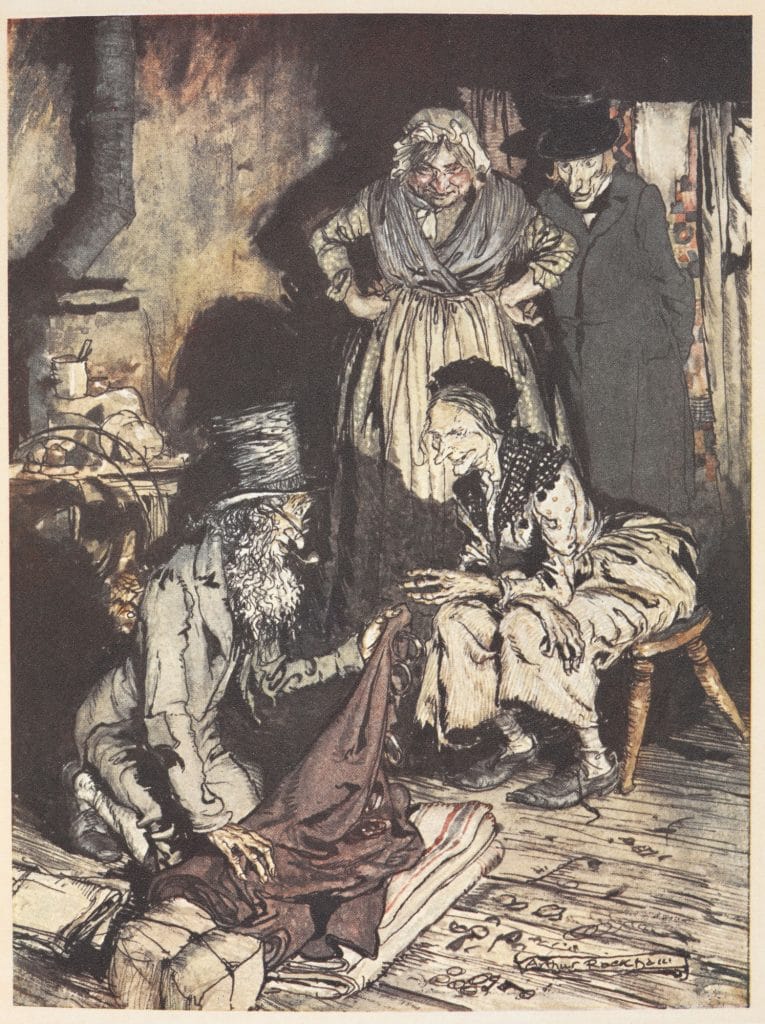
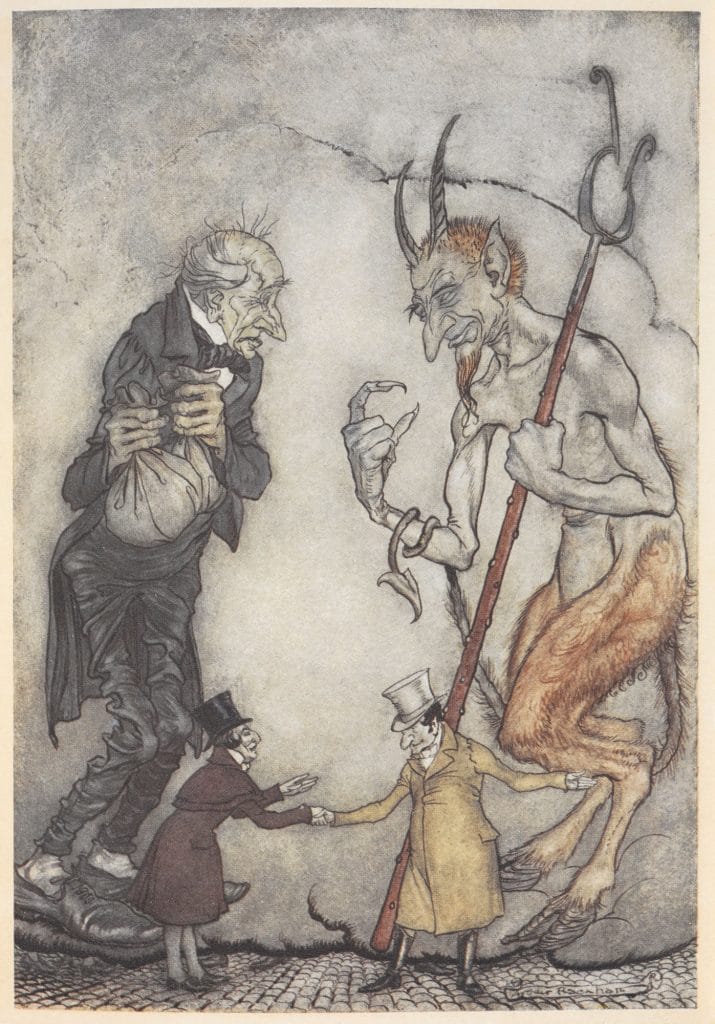
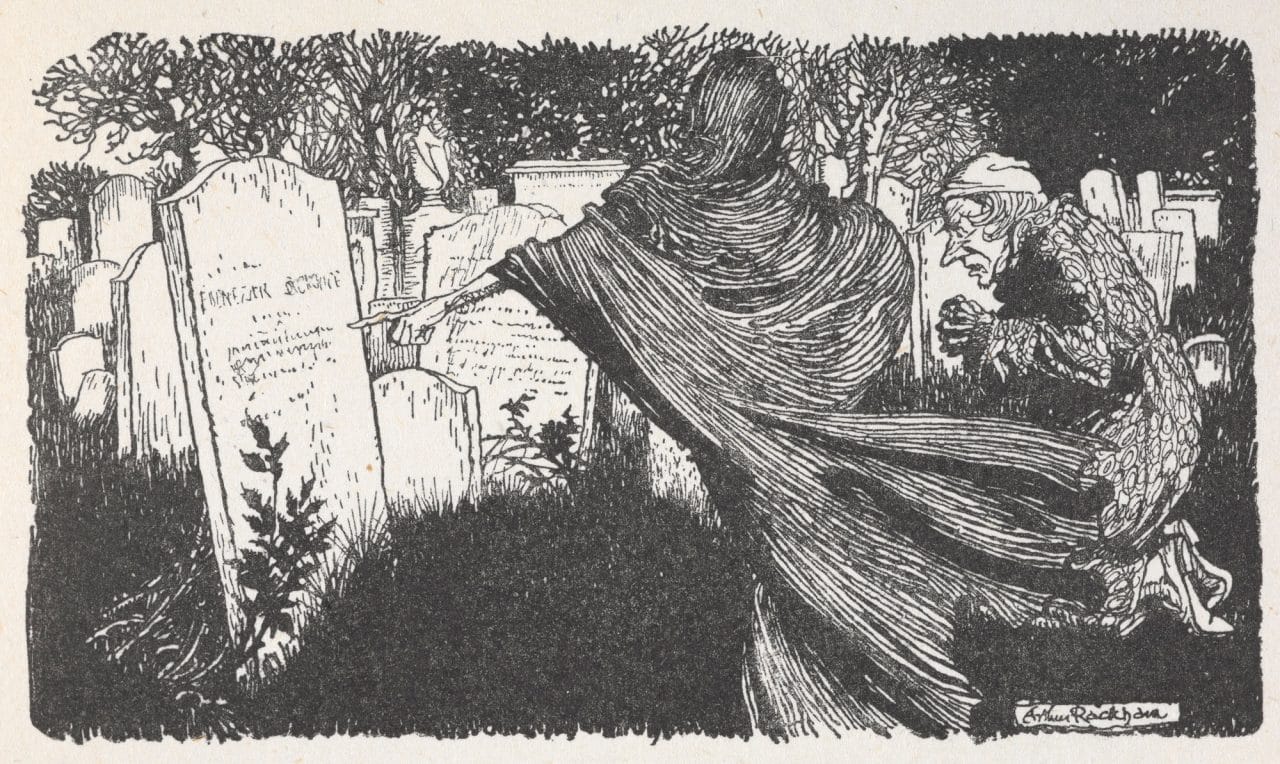
Dickens’s motivation
Dickens was prompted to write this morality tale having been ‘perfectly stricken down’ by the revelations published in a parliamentary report on child labour in 1843. The report showed the horrific conditions and long hours in which children were forced to work in mines or factories in Victorian Britain. Dickens was determined that he would strike “the heaviest blow in my power” on behalf of these victims of the industrial revolution.
However, he wanted the book to entertain and delight as well as to warn and moralise. In the preface to the book he wrote, ‘I have endeavoured in this Ghostly little book, to raise the Ghost of an Idea, which shall not put my readers out of humour with themselves, with each other, with the season, or with me. May it haunt their houses pleasantly, and no one wish to lay it’.
Publication
A Christmas Carol was the first, and the most popular, of Dickens’s series of Christmas books. The volume, published by Chapman and Hall on 19 December 1843, was an immediate success and the initial print run of 6,000 copies sold out within a matter of days. Dickens had hoped the book would clear his debts with Chapman and Hall, but the lavish production, including four woodcuts and four colour plates by John Leech, meant Dickens only made £230 from the first printing. Worse was to follow when a plagiarized version of the book appeared in January 1844. Dickens took the publishers of the pirated edition to court but, even though he won the case, he found himself liable for costs of around £700 when the guilty party declared bankruptcy. His bitterness at the whole affair resurfaced years later when he came to describe the labyrinthine and corrupt workings of the Court of Chancery in Bleak House (1853).
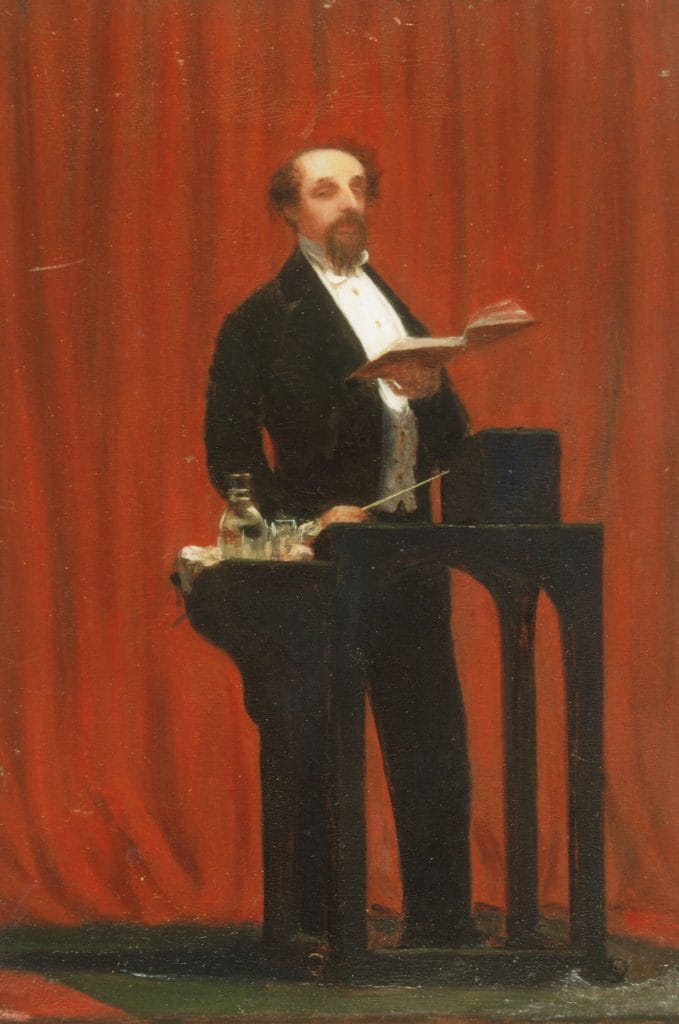
Created in 1858, Robert Hannah’s painting of Charles Dickens captures him in the year that the public readings of his works turned from charitable events into professional business
Dickens’s public performances
Dickens famously gave lively and emotional readings of his own works to enthralled audiences on both sides of the Atlantic. His first Christmas Carol performance lasted around three hours and was held at City Hall, Birmingham, to a crowd of 2,000. Altering expression, accent and gesture, Dickens played the characters so well that he was said to possess them. As well as his first, A Christmas Carol was Dickens’s last performance, on 15 March 1870.
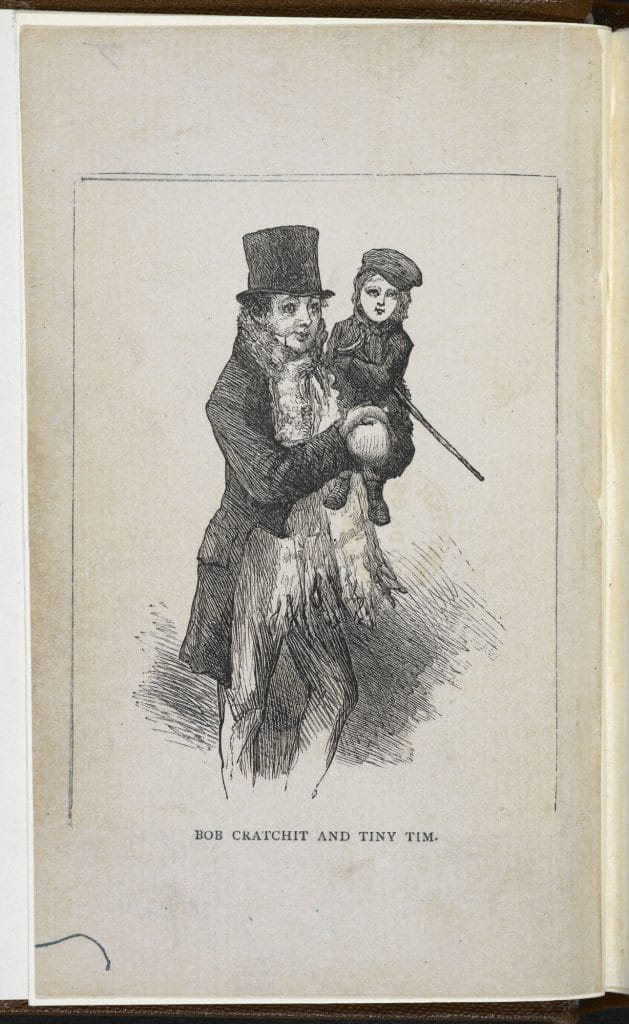
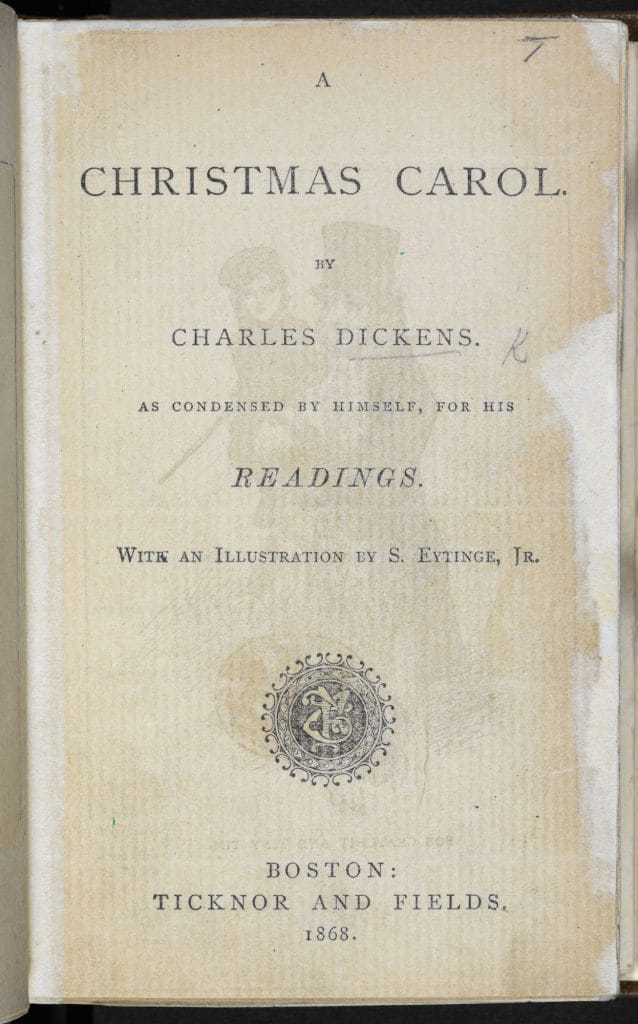
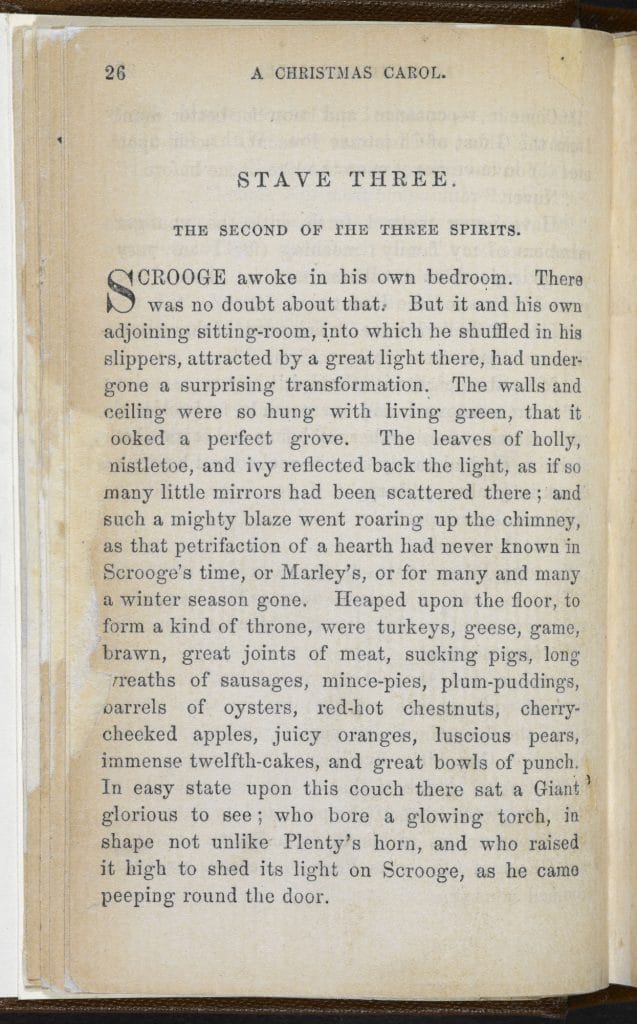
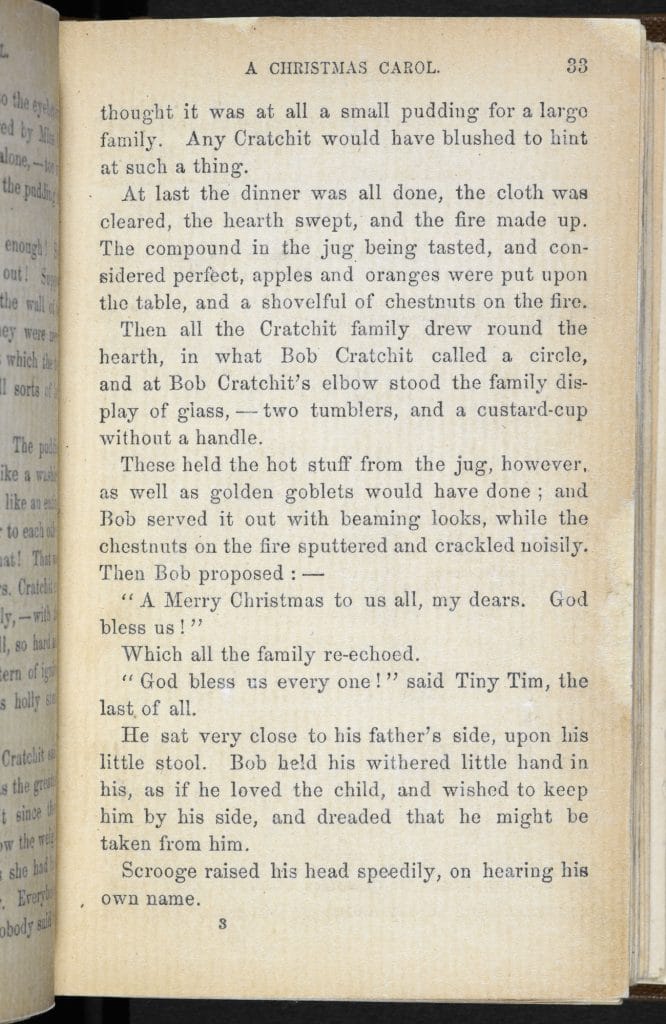
相关文章
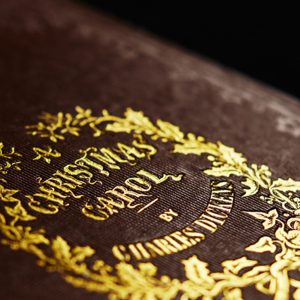
The origins of A Christmas Carol
Professor John Sutherland considers how Dickens’s A Christmas Carol engages with Victorian attitudes towards poverty, labour and the Christmas spirit.
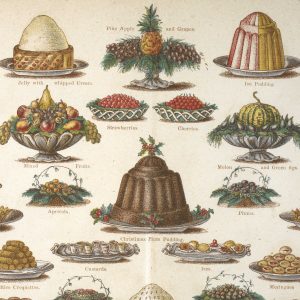
Charles Dickens and the Victorian Christmas Feast
Simon Callow explores Charles Dickens’s depiction of the Christmas feast and investigates the origins of England’s festive culinary traditions.
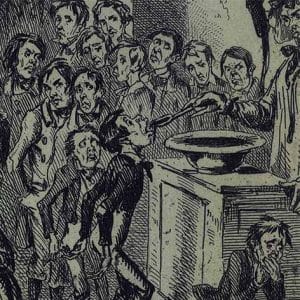
Charles Dickens’s Nicholas Nickleby
Charles Dickens's Nicholas Nickleby was first published in monthly parts between March 1838 and September 1839. Nicholas's adventures take him to the nightmarish school Dotheboys Hall, home of the brutal schoolmaster Wackford Squeers – one of Dickens's greatest grotesques.
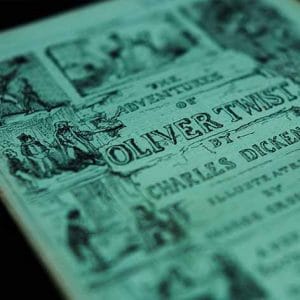
Charles Dickens’s Oliver Twist
Oliver Twist is Charles Dickens's second novel, and is about an orphan boy whose good heart helps him escape the terrible underworld of crime and poverty in 19th-century London. Balancing suspense, melodrama, pathos and humour, it paints a picture of a city tainted by social deprivation.
